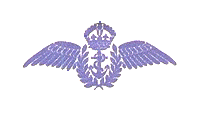

'Immortal'
'No.809 Royal Navy Squadron'
(15th January 1941 to 31st August 1951)
No.809 Squadron first formed at Lee-on-Solent on 15th January 1941 as a single seater fighter squadron with twelve Fulmar II's. Embarking with these on HMS. Victorious in July 1941, the squadron shot down four Bf 109's and Bf 110's for the loss of three of it's own aircraft during an attack on the Artic port of Petsamo. The squadron was in action several times during the next twelve months whilst the ship was escorting North Russian Convoys, shipping strikes were also being carried out on Bodø in Norway. On 9th March 1942 No.809 was the escort to the Albacores of No.817 and No.832 Squadrons in an unsuccessful attack on the German battleship 'Tirpitz' at sea. In July 1942 the ship sailed for the Mediterranean to take part in Operation Pedestal, an unlucky Malta Convoy, during which No.809 squadron shot down two enemy aircraft and lost three of it's own.
Returning home, the squadron undertook army co-operation training at Sawbridgeworth, being reduced to six aircraft when 'B' flight broke away on 1st October 1942 to form the basis for No.879 Squadron. Re-embarking on HMS. Victorious during October, No.809 carried out tactical reconnaissance during the North African landings, following which it returned home again to re-equip with ten Seafire IIc's, some Ib's also being used for a time. The latter were discarded in August 1943 when the squadron embarked on HMS. Unicorn to provide cover the following month for the Salerno landings. On returning from this trip the squadron joined the 4th Naval Fighter Wing at Andover, embarking at the end of the year on HMS. Stalker for work-up. The squadron disembarked to Dale in February 1944 and it's strength was increased in March to twenty aircraft, including some LR.IIc's.
After a spell at Long Kesh in Northern Ireland working with the Army, No.809 re-embarked on HMS. Stalker in May 1944 and sailed for the Mediterranean. The squadron then became split up for some weeks, detachments being ashore in both North Africa and with the Desert Air Force in Italy before reuniting and re-embarking at the end of July 1944. During August the squadron provided support for the landings in the South of France, carrying out fighter patrols, spotting, bombing and tactical reconnaissance. During the next two months operations were carried out in the Aegean before returning home in November 1944 to be equipped entirely with Seafire L.III's.
At the end of November 1944 No.809 transferred to HMS. Attacker for passage to Alexandria, where three months were spent ashore at Dekheila. In March 1945 it was reunited with HMS. Stalker, in which it sailed for Ceylon to join the East Indies Fleet. During work-up, several pilots were attached to the RAF at Akyab in Burma, before re-embarking in May 1945 to provide fighter cover for the re-occupation of Rangoon. Bombing and fighter cover were provided during the photographic reconnaissance of Malaya and Sumatra in June 1945 and after VJ-day the ship sailed to give cover for the re-occupation of Malaya. Returning home in October 1945, the squadron re-equipped on arrival with twelve new Seafires, these being mainly F.XVII's except for three F.XV's from No.805 Squadron. However the squadron disbanded at Nutts Corner, Belfast on 11th January 1946.
No.809 next reformed at Culdrose on 20th January 1949 with four Sea Hornet NF.21's, later increasing to eight aircraft and operating as a night fighter and strike squadron. On 12th May 1950 the squadron embarked on HMS. Vengeance, attached to the 15th Carrier Air Group, further short spells being spent on this carrier in July 1950 and May 1951. However, carrier operations with the twin-engined machines proved difficult and three months were spent with the RAF at Coltishall from 31st August 1951.
